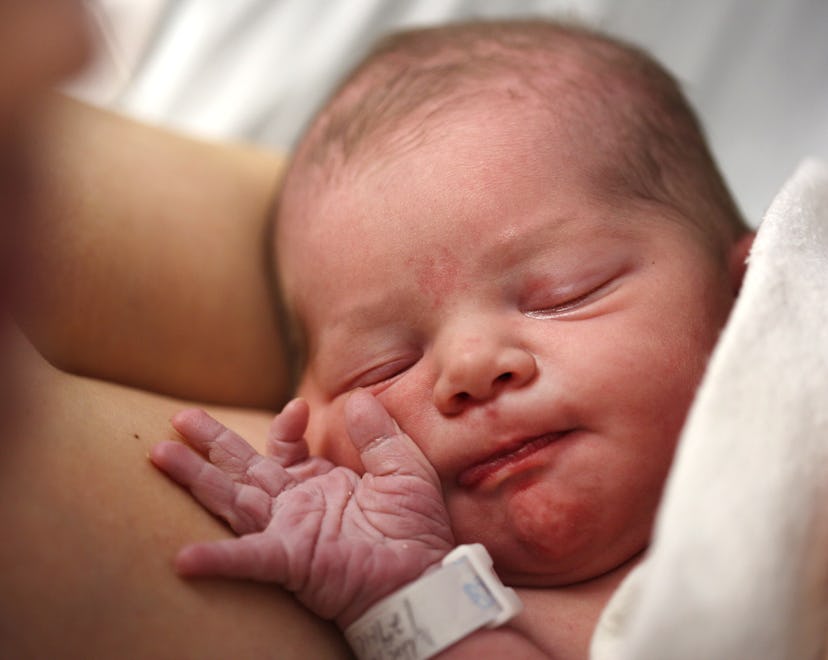Birth

What Is An En Caul Birth? Experts Explain
Not a lot of people can say they’ve experienced this one.
When you get pregnant, one essential thing to keep in mind is that what you imagine your labor is going to look like isn’t always what it ends up looking like. Everyone’s birth story is going to be a little different (and that’s kind of part of the “miracle of birth”) and, though you can make a birth plan, you don’t really know what will happen. Some people have routine vaginal births, some have cesarean sections, some white-knuckle through harrowing complications, and some people have incredibly rare experiences. An en caul birth is one thing that absolutely qualifies as a rare labor and delivery experience. Just how rare? Less than one in 80,000 deliveries result in an en caul birth, which is sometimes also called a veiled birth.
Despite the fact that an en caul birth really isn’t common, it’s always a good idea for any pregnant person to know about the possibilities of what could happen during labor and delivery. Learning more about en caul deliveries is smart, and it’s also interesting, since these types of births are pretty fascinating. It’s nothing that should make you feel stressed or anxious, and most OB-GYNs would probably agree that there’s a good chance it won’t happen. That said, you can never be too prepared for one of the biggest moments of your life. Here’s a look at what you should know about en caul births.
What is an en caul birth?
Throughout pregnancy, the fetus is safely enclosed in the amniotic sac (also known as “caul”). The amniotic sac is what protects them and helps keep them healthy. During a typical delivery, the amniotic sac ruptures — this is when your water breaks or is broken — and the fetus is delivered through the vaginal opening.
During an en caul birth, delivery looks a little different. “En caul delivery is when a woman delivers her baby and the intact membrane and baby are still in the amniotic sac,” explains Dr. Daniel Roshan, a board-certified high-risk maternal-fetal OB-GYN in New York City. “Sometimes women go into labor and the amniotic sac doesn’t rupture, therefore the child is delivered en caul, within a jelly-like bubble.” These very rare en caul births can happen with a C-section or a vaginal birth.
Reasons for an en caul birth
One of the reasons an en caul birth happens, Roshan notes, is having a C-section. That’s because when you have a vaginal delivery, one of two things usually happens: Either your water breaks on its own, signaling birth is just around the corner, or your water is broken when you’re induced. This doesn’t always happen with C-sections, especially planned ones. During a C-section, a doctor can either break the amniotic sac and take the baby out, or remove the entire sac with the baby.
That said, en caul deliveries can happen with vaginal births. In that case, research shows this is more common with premature births.
Is en caul birth dangerous?
No, en caul deliveries are not dangerous. “The process of delivery is very similar to a standard birth,” Roshan says. When a baby is delivered en caul, the doctor will gently break open the amniotic sac and water will come out. Sometimes, the baby even breaks the sac themselves after they come into the world.
Is there a benefit to en caul delivery?
There are no proven benefits to an en caul birth as compared to a typical delivery, according to Roshan, although some people say it offers extra protection for the baby.
In the end, an en caul birth is simply different kind of birthing experience — and a really unique one at that. If you experience an en caul delivery, rest assured that there are no significant risks involved.
Experts:
Dr. Daniel Roshan, leading board-certified high-risk maternal-fetal OB-GYN in New York City